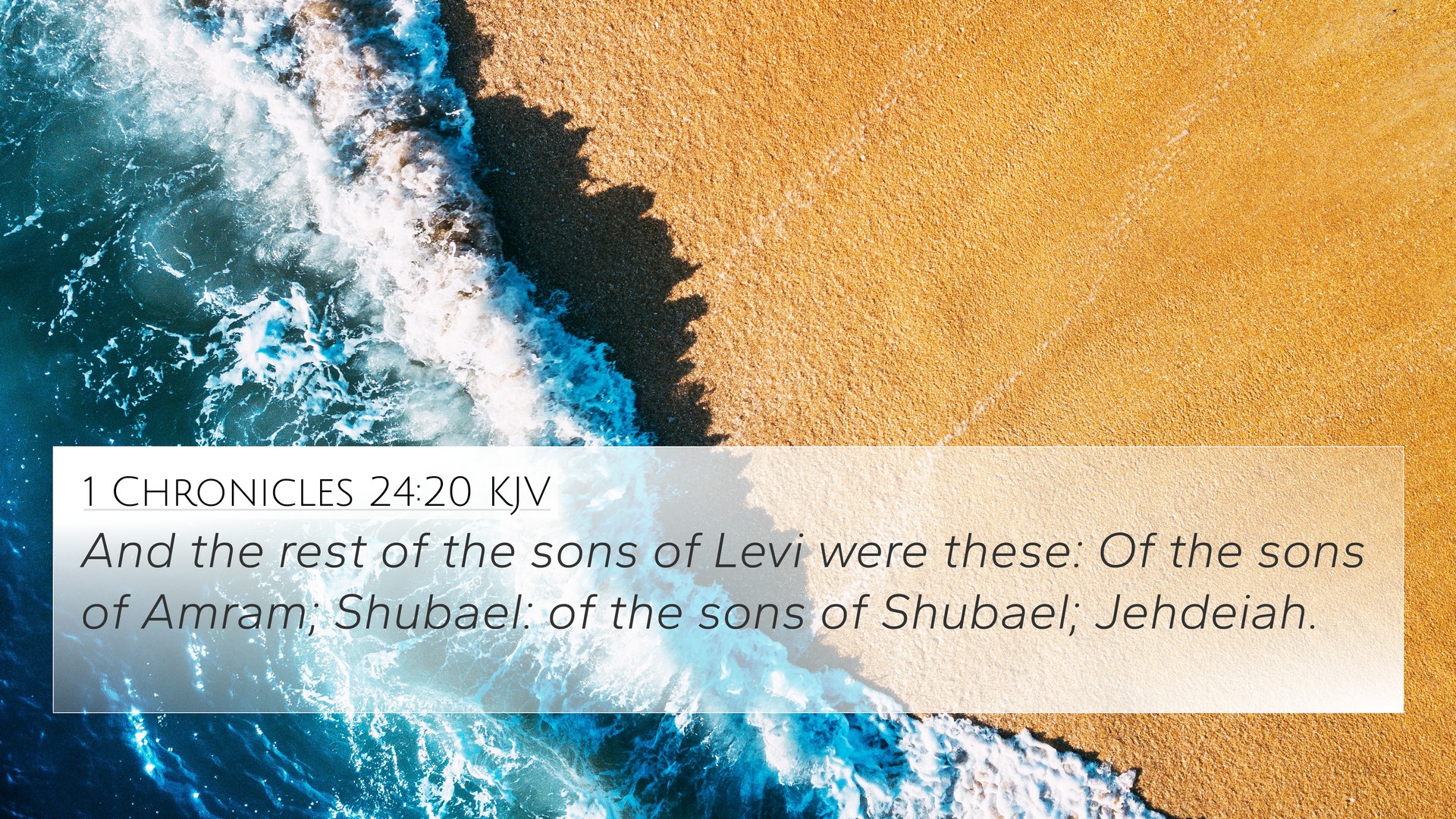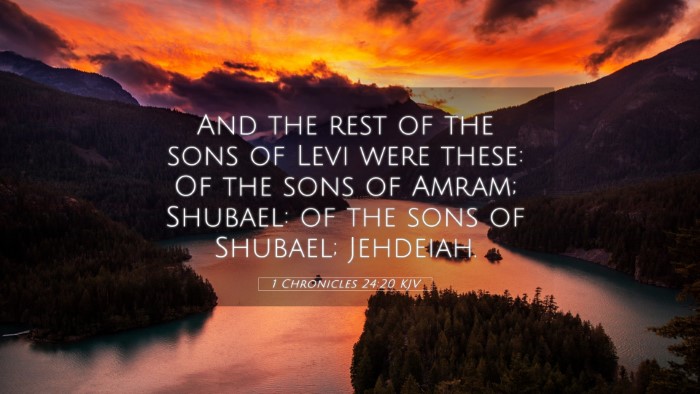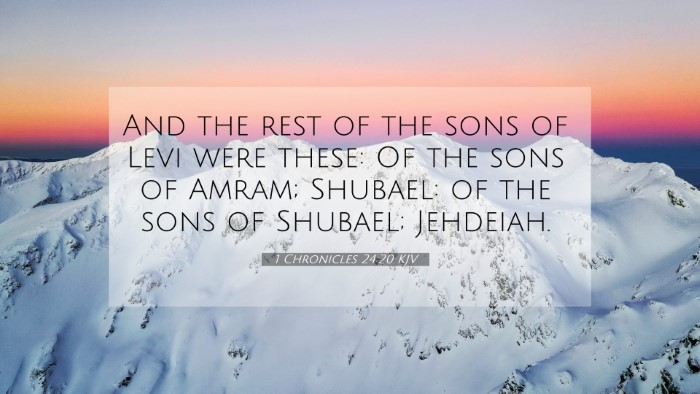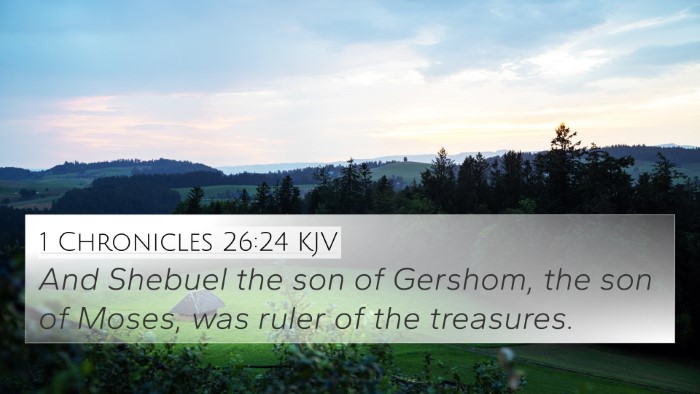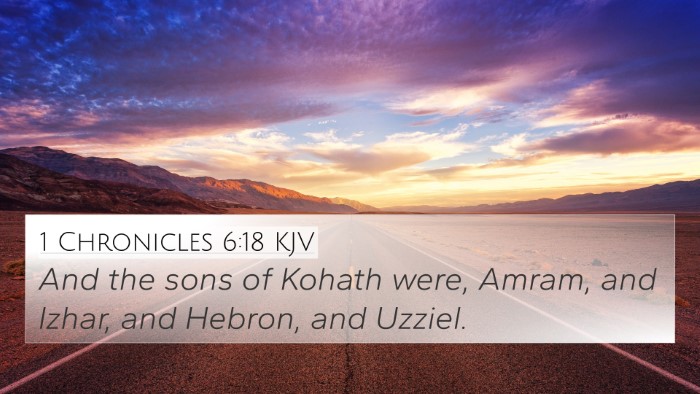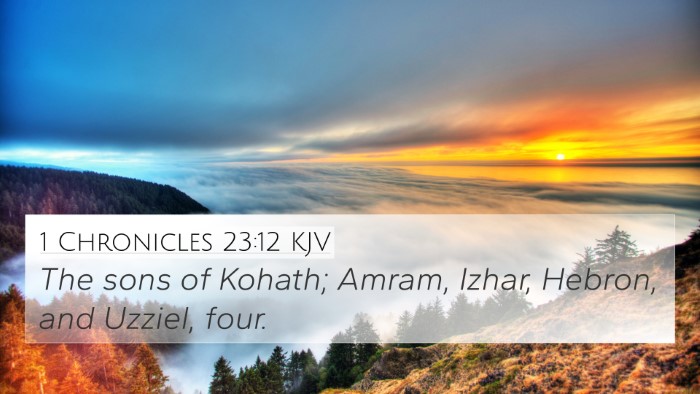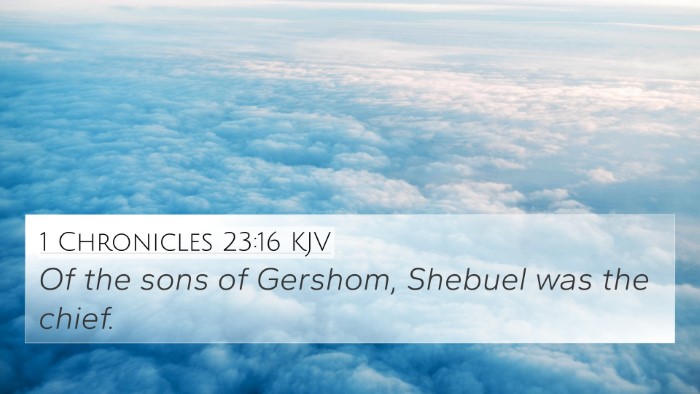Understanding 1 Chronicles 24:20
1 Chronicles 24:20 states, "And the rest of the sons of Aaron, of the families of the Kohathites, were in the cities of their possession in their borders." This verse provides insights into the organization of the Levitical priests, particularly the descendants of Aaron, and their designated cities.
Overview of the Passage
The context of this verse is rooted in the chapters that enumerate the service assignments of the Levites, notably the sons of Aaron, who were tasked with the sacred tasks of the tabernacle and later the temple. The verse highlights their locality and their separation from other tribes.
Commentary Insights
-
Matthew Henry remarks that this passage illustrates the orderly arrangement of priests and Levites, emphasizing the importance of their roles. He urges readers to appreciate the service of these individuals and their dedication to God’s work.
-
Albert Barnes focuses on the geographical aspect, noting that the cities were strategically allocated to ensure that the priestly functions could be fulfilled efficiently throughout Israel. He stresses the significance of the Levites' presence in various regions to uphold God’s worship.
-
Adam Clarke adds that the families of the Kohathites were given specific responsibilities in the worship rituals. He indicates that their allotment was vital for the collective functioning of the temple and the sanctity of worship.
Key Themes and Connections
The service and assignments of the priests underscore themes of order, worship, and community service. This verse connects to the overarching theme of God's grace in allowing a chosen lineage to serve Him. Below are key connections made through cross-references:
- Exodus 28:1 - Discussion of Aaron and his sons as priests, establishing their sacred lineage.
- Numbers 3:27-31 - Details regarding the families of the Levites and their duties, providing a further understanding of their roles.
- 1 Chronicles 6:48 - Indicates the distribution of Levites among the tribes, paralleling the organization presented in 1 Chronicles 24:20.
- Deuteronomy 18:1-2 - Speaks about the rights of the priests and Levites, emphasizing their unique position in Israel.
- Hebrews 5:4 - Discusses the priesthood, drawing connections between the Levitical duties and Christ’s priestly work.
- Joshua 21:4 - Records the cities assigned to the Levites, showing how the Old Testament establishes a pattern for their location and function.
- Luke 1:5-9 - Mentions priestly service during the time of Herod, relating back to the significance of the Aaronic priests.
Conclusion
Understanding 1 Chronicles 24:20 enriches our appreciation of the Levitical priesthood and God's methodological design in structuring worship within Israel. The themes of service, order, and community are paramount, illustrating how each family served God's purpose. By examining cross-references, we gain deeper insights into the connections and significance of the biblical text.
